Exploring the realm of companion plants for carrots doesn’t only maximize your garden space, but it opens a world of ecological benefits too. In this article, we’ll delve into the fascinating blend of plants that not only thrive alongside carrots but also significantly enhance their growth by improving soil quality, assisting in nutrient absorption, and bolstering their natural defenses, among other benefits.
Understanding the art of companion planting is an enriching part of gardening, one that could lead to a bountiful harvest. So, stay with us as we navigate the best (and the worst) companion plants for carrots – we believe the insights you’ll gain will transform your gardening experience!
Table of Contents
The best companion plants for carrots
In the sections below we’re going to share with you some of the best companion plants for carrots, so that you can see what perks they bring to the table and try a little companion planting on your own. Once we’ve done that, we’ll move on and tell you some ‘bad’ companion plants so that you’ll know the pitfalls of these and can keep those plants far away from your carrots.
If you’re ready, then let’s start checking out potential ‘roomies’ for your carrots so that you can plan your next plantings!
Kitchen and medicinal herbs
1. Borage
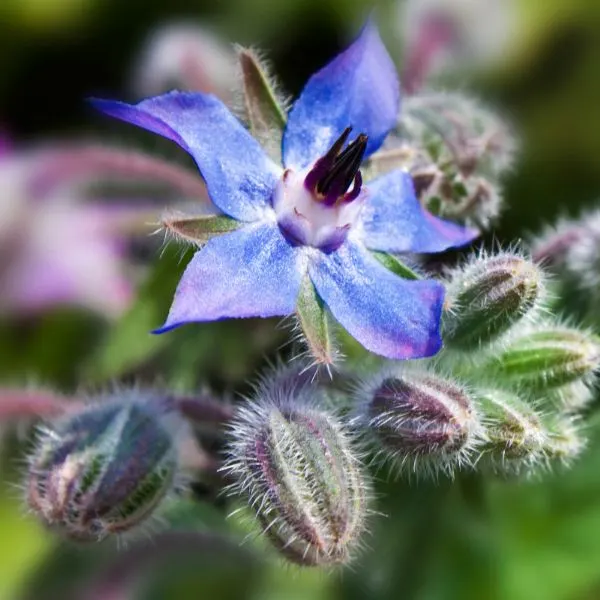
- Botanical name: Borago officinalis
- Sun Requirements: Full sun or partial shade
- Soil Type: Will grow even in poor soil, but thrives in well-drained, moist soils
Considered to be in the medicinal herb category, Borage is a nice little mix of utility and ornament, and a lot of herbalists like to use it in the form of tea for a diuretic or for its calming effects. While we can’t confirm its use as a medicine, we CAN say that it makes an excellent companion plant for your carrots.
Borage pulls its own weight first by repelling cabbage nematodes and cabbage moths, while also attracting useful pollinators into your garden. Next, it’s thin, probing roots will draw up useful micronutrients to the benefit of both itself and your carrots. It doesn’t hurt that it’s easy on the eyes, either, with its pretty blue flowers, so consider it a candidate for sharing space with your carrots – these two get along like gangbusters
2. Rosemary

- Botanical name: Salvia rosmarinus
- Sun Requirements: Full sun
- Soil Type: Any well-draining soil, although clay or sandy loam is best
Rosemary makes for an attractive little ‘natural fence’ for your carrots and aside from providing you with a spice that you can get some great kitchen use out of, it will also work a little magic to help your carrots to be their very best.
The distinctive scent of rosemary is pleasant to us, but a little pest called the ‘carrot rust fly’ can’t stand the smell of the stuff. Rosemary will also attract a small host of bees, to help with pollination duties in your garden, and to finalize its perks, it won’t compete with your carrots much at all for nutrients or shade them out, either. All and all, it’s a pretty and practical pairing!
3. Cilantro
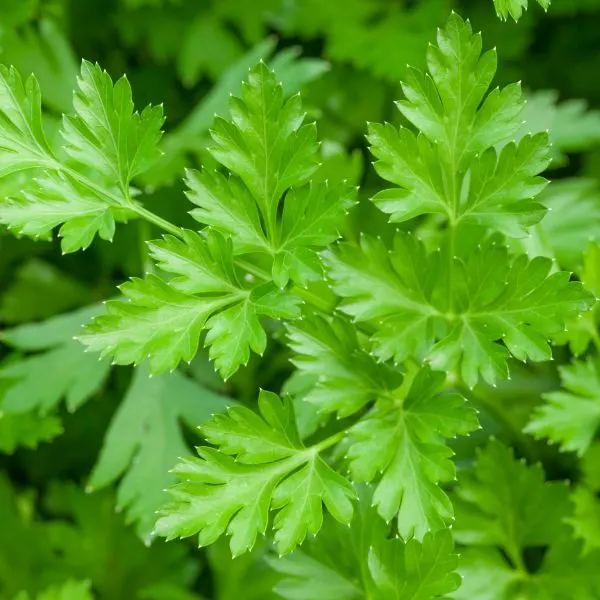
- Botanical name: Coriandrum sativum
- Sun Requirements: Full sun
- Soil Type: Light, well-drained soil, with organic matter
While we tend to think of Cilantro as a must-have for traditional Mexican dishes, it’s also a staple ingredient in many Caribbean, Indian, Middle Eastern, and Asian dishes, as well. Planting cilantro with your carrots will result in a ‘natural security solution’ that acts to attract predatory insects that can help your carrots with a large number of pests, such as rust flies, lygus bugs, nematodes, and more.
As it also happens to be a ‘cool weather crop’ and its size won’t shade your carrots too much, you can plant them and harvest them at the same time – not a bad match at all, really, and well worth considering as your chosen carrot-companion.
4. Oregano
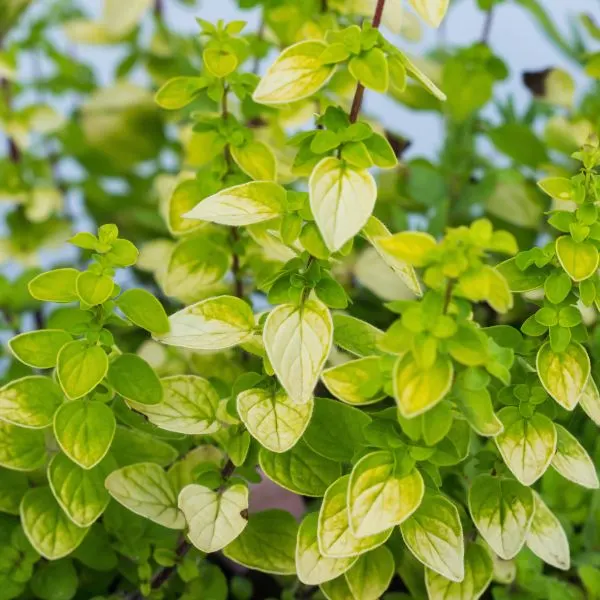
- Botanical name: Origanum vulgare
- Sun Requirements: Full sun (or partial shade in warmer climes)
- Soil Type: Sandy, well-drained soil
Another herb that you’ll get plenty of mileage out of is oregano, especially if you like whipping up homemade sauces, marinades, stuffings, and sauces! Oregano and carrots are another natural solution to rust flies and nematodes and a lot of seasoned gardens swear that it will improve the flavor of your carrots to boot!
While we can’t confirm this, oregano and carrots definitely go well together in cooking, so it’s certainly not a companion planting option that you’ll regret anytime soon!
5. Basil
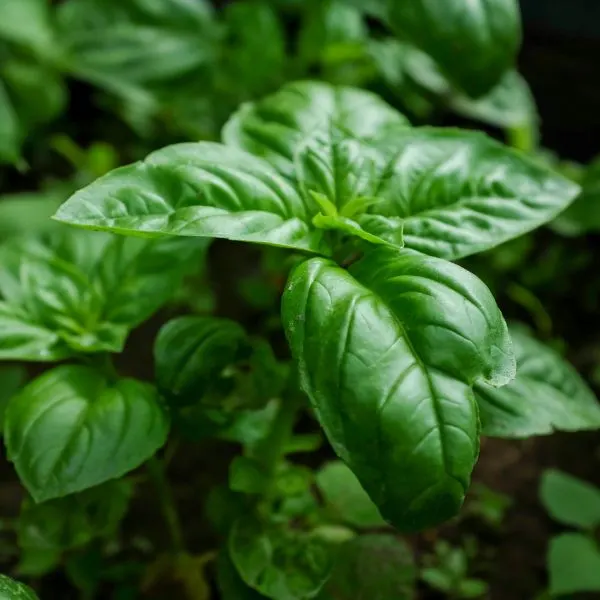
- Botanical name: Ocimum basilicum
- Sun Requirements: Full sun
- Soil Type: Fertile, moist, and well-drained soil
A Mediterranean and Asian favorite, Basil helps to keep house flies and mosquitos at bay, which is definitely nice when you are outside harvesting or tending your plants, but it’s also said to improve the flavor of carrots that it is planted next to.
While this may be another ‘old gardener’s tale’, we tend to believe it when we hear this sort of thing, and even if it proves not to be the case, these plants won’t compete over resources and aside from mosquitoes and houseflies, basil also wards off rust flies, fleas, asparagus beetles, and tomato hornworms. As a companion plant for your carrots, it’s safe to say that basil definitely pulls its own weight!
Healthy Veggies and Delicious fruits
6. Onions
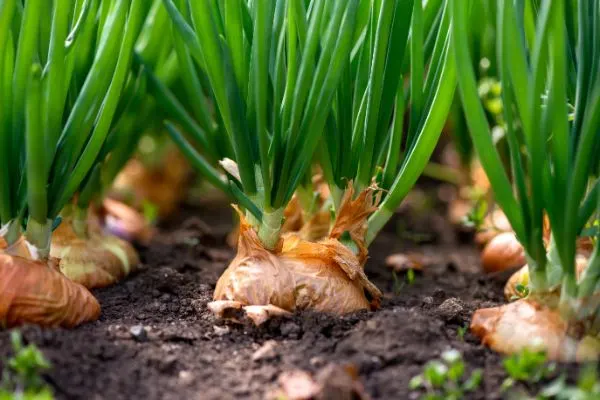
- Botanical name: Allium cepa
- Sun Requirements: Full sun
- Soil Type: Well-drained, fertile soil, with a pH 6.0-7.0
A great companion plant option that you can harvest straight from the garden to your kitchen is onions. Paired in quite a lot of dishes from around the world, the perk that these sharp and stinky veggies bring to your carrot patch is that they are a STRONG deterrent for those pesky carrot flies.
While your onions are standing guard, they also won’t be competing with your carrots for all the soil nutrients, due to their very shallow roots. The deeper-rooting carrots will have their own ‘nutrition zone’ further down in the soil, while your onions will essentially ‘nibble’ at the nutrients on top. As such, this is a pair that you can plant together with confidence!
7. Broccoli

- Botanical name: Brassica oleracea var. italica
- Sun Requirements: Full sun to partial shade (6 hours of sunlight daily is best)
- Soil Type: Soil that falls between clay loam to sandy, well-drained
Pairing broccoli and carrots together is another option that can be a very good one, just be sure to spread some crushed eggshells to help increase the calcium content in your soil. With this particular pairing, the carrots are doing most of the hard work by drawing up helpful nutrients to the soil that can make your broccoli grow up healthy and strong.
This works out well for the both of them but you do need to spike the calcium content in the soil to make sure that they’ll get along, as otherwise, they will compete over the calcium. Provided that you go into this ‘roomie arrangement’ with this fact in mind then these two will get along like the best of friends in their shared plot of your garden.
8. Cabbage
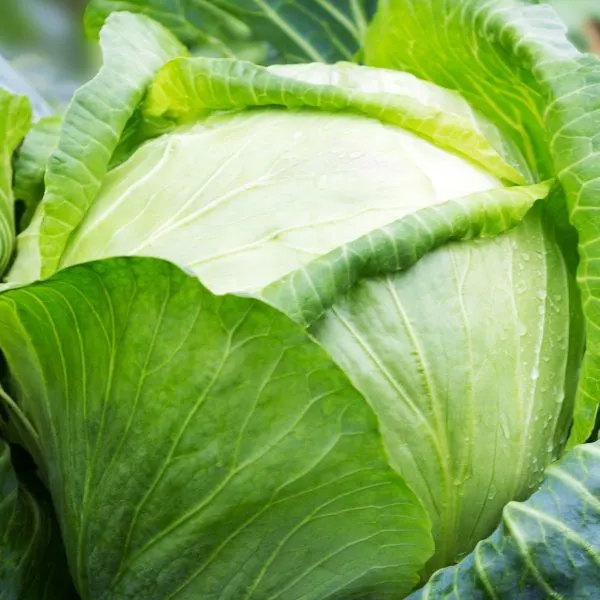
- Botanical name: Brassica oleracea var. capitata
- Sun Requirements: Full sun
- Soil Type: Loamy soil with compost
While cabbage doesn’t bring any perks to your carrots, this companion planting option can save a little space and will certainly benefit your cabbage. That’s because the carrot has deep roots that can siphon up nutrients to the upper levels of your soil and the shallow-rooted cabbage will happily take advantage of this.
So, in the interest of saving space and getting a larger yield, you might want to consider planting your carrots and cabbage together – you only get one perk, but it’s a really GOOD one.
9. Spinach

- Botanical name: Spinacia oleracea
- Sun Requirements: Full sun (will tolerate partial shade)
- Soil Type: Moisture retentive, well-drained, and nitrogen-rich soil
Spinach and carrots work for many of the same reasons as cabbage does. The deeper roots of the carrots, for instance, will draw nutrients from the soil below, while the shallow-rooted spinach will sup from the surface.
As the carrots are helping to draw up nutrients, your spinach will be eating well, and it will show in your yield. Finally, as both crops are of the cool-weather variety, you’ve also got a convenient harvest arrangement for both of these beloved veggies.
10. Beans

- Botanical name: Phaseolus vulgaris L.
- Sun Requirements: Full sun
- Soil Type: Well-drained clay loam
Growing carrots with beans creates a two-way street of benefits that both plants will enjoy. The beans will start things off by spiking some nitrogen into the soil that the carrots can make good use of. Those carrots, in return, are going to attract ladybugs that can patrol your beans for aphids and other delicious pests that might otherwise snack on your beans.
The best relationships are the ones where both members are contributing, so give this pairing a try and see what you think – it’s a very good match, indeed!
11. Leeks
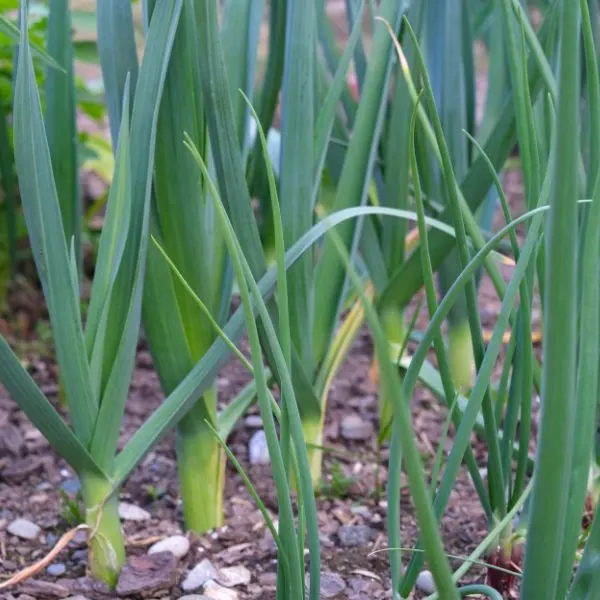
- Botanical name: Allium porrum
- Sun Requirements: Full sun
- Soil Type: Rich, well-drained soil
Leeks are delicious and as far as companion plants for carrots, they’re also quite the good match. Like onions, leeks are going to help repel carrot flies with their scent and they can also help to provide some occasional shade when it’s simply too hot outside for your carrots to be their best.
As they are both cool-weather crops, you’ll have a final perk of having the same harvest times, so these two will definitely make a good pairing in your garden should you want to give it a try!
12. Lettuce
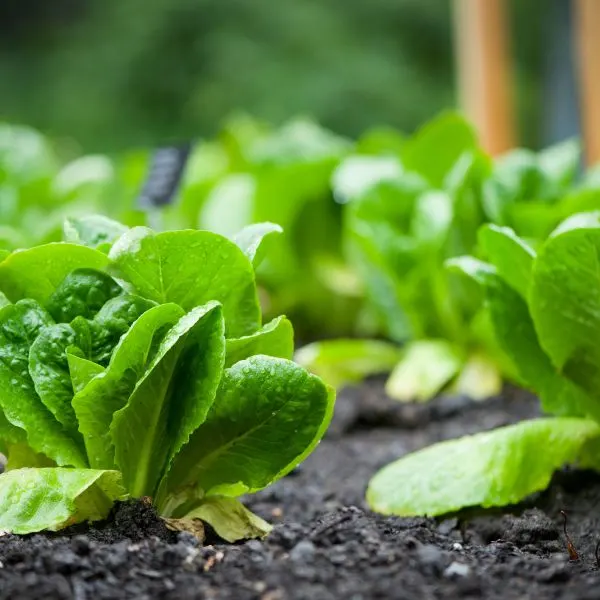
- Botanical name: Lactuca sativa
- Sun Requirements: Full sun or light shade
- Soil Type: Loose, well-drained soil with adequate nitrogen
While lettuce and carrots don’t really have a lot of perks going for them, they do make a very convenient planting that has a few advantages that make it worthwhile. First off, your lettuce has shallow roots, so the carrots will pull up some nutrients so that the lettuce will be all the stronger for it.
Since they are feeding from very different levels of the soil, they won’t be competing for nutrients, and the final perk is very practical — pairing lettuce with carrots is a great way to save space!
13. Tomatoes
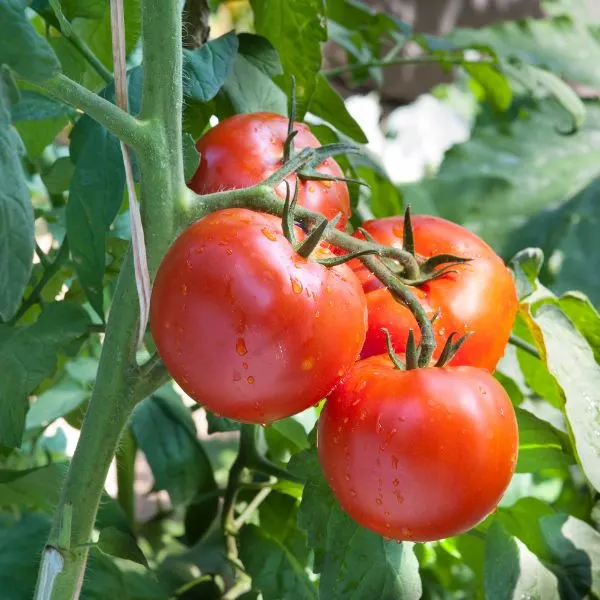
- Botanical name: Solanum lycopersicum
- Sun Requirements: Full sun
- Soil Type: Almost any – except clay- and sandy loam is best
Carrots and tomatoes are a very popular companion planting pair that you might want to try in your own garden. Putting these two together helps your carrots first, as they can get a little shade on the hottest of days and some protection in the form of a chemical called solanine that your tomatoes will produce.
Solanine acts as a natural insect repellent to help protect both crops and the carrots will even make a little contribution, too, by bringing up some nutrients in the soil for both plants to share.
Ornamental additions
14. Nasturtium
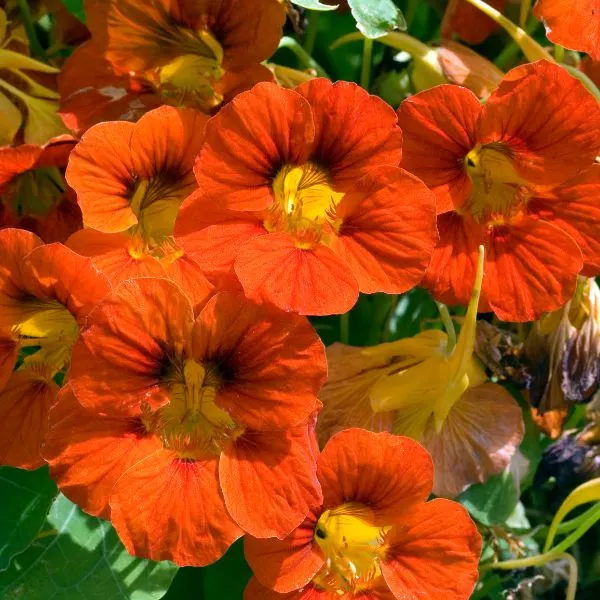
- Botanical name: Tropaeolum majus
- Sun Requirements: Full sun
- Soil Type: Fertile, well-drained soil
Nasturtium plants will give you a little orange in the form of its bright flowers right above those orange carrots growing below, but it also brings some other perks to the table. Nasturtium attracts pollinators, for one thing, and beneficial insects that will happily munch on many of the pests that might otherwise try to snack on your carrots.
What’s more, though, is that they also act as a ‘trap crop’ – Nasturtium is 100% edible for humans and insects love it quite a lot too. Border your carrots with it sometime and you can see for yourself, these plants make a really good pair.
15. Marigolds
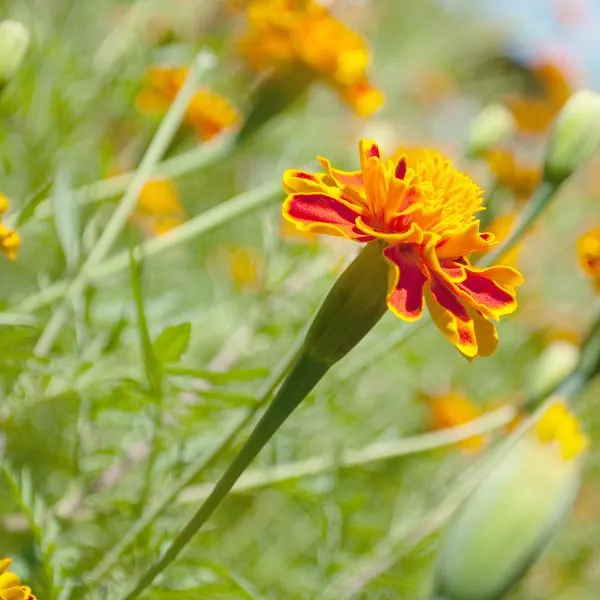
- Botanical name: Tagetes
- Sun Requirements: Full sun
- Soil Type: Loamy, well-drained
Marigolds are beautiful and it just so happens that they also make great companions for your carrots. The biggest perk is that those marigolds will help to repel aphids, which can really make a mess of your carrot crop if they start visiting in numbers.
They’ll also help to keep away nematodes, cabbage worms, and pesky mosquitoes, and as a final gift to your carrots, they can even provide a little respite from the sun when it’s WAY too hot outside. All in all, they’re a pretty good companion plant and your carrots will probably love them as much as you will!
Bad companion plants for carrots
So, we’ve reviewed the ‘good guys’ that will get along with and even help your carrots out, but there are also some ‘pitfall plants’ that can really make your carrots miserable if they are planted too close. Let’s take a look at them so that you’ll be sure to avoid them!
1. Celery
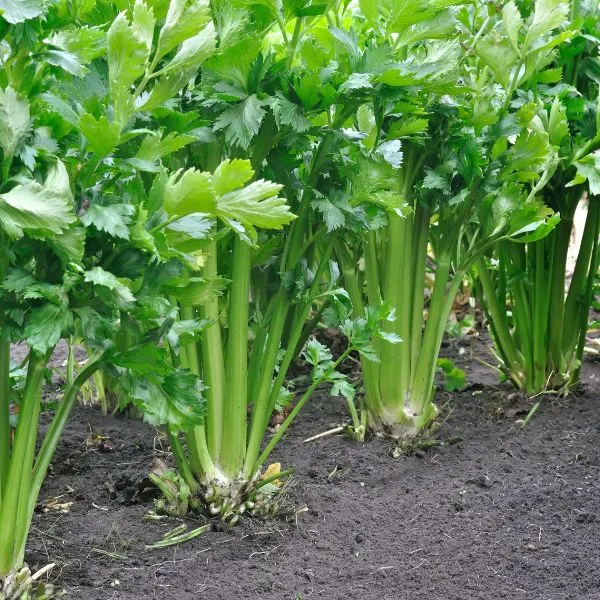
Celery is delicious with carrots in a bowl, but in the garden they really aren’t good for each other. The problem is that the celery is going to attract hungry flies that can munch on your carrots while they are there. Putting these two together is rather like setting up a buffet for them, so keep your celery and carrots separated to avoid this potential pitfall.
2. Dill

Like celery, dill planted too close to your carrots is also going to attract unwanted flies, and they’ll be more than happy to lay their eggs in your carrots and you definitely don’t want that. They can do something worse, though, in the form of unwanted cross-pollination. The end result will be bad tasting carrots, so it’s best to give your dill somewhere else to chill — a place that’s far away from your carrots1
3. Potatoes
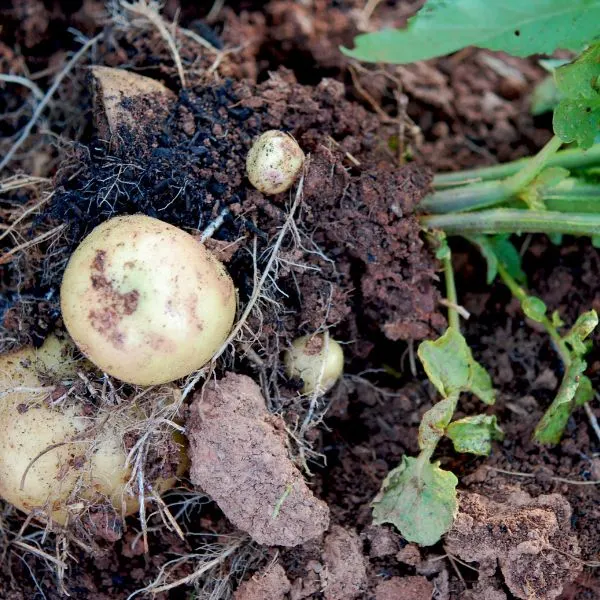
Potatoes grow really fast and this can be a huge problem for carrots trying to grow up healthy and strong, as the potatoes will grab up the lion’s share of the nutrients first! Aside from this, they also attract many of the same pests, so planting them together falls under the ‘buffet scenario’ that we described with celery, as well. As such, it’s really best just to keep these two separated.
4. Fennel
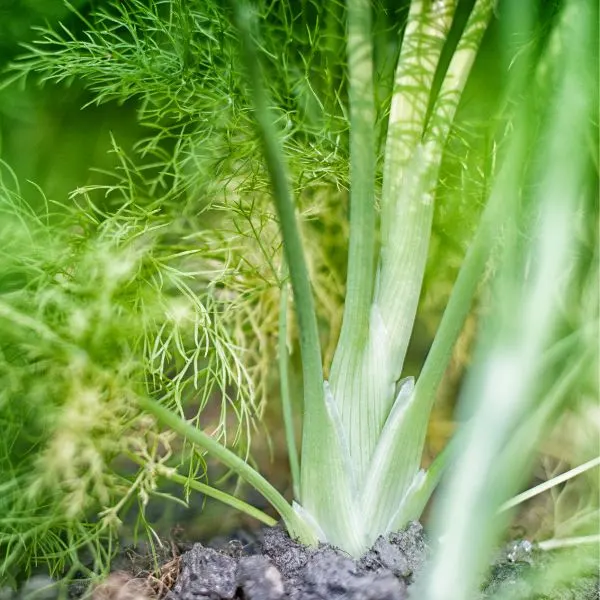
Fennel can attract many beneficial insects, but it suffers from many of the same natural predators as your carrots do. While other plants may benefit from the nearby fennel, your carrots and that same fennel will be sitting ducks for a larger host of pets than either would attract on their own, and neither plant will do very well because of this.
To add to the trouble, fennel also produces a chemical called anethole, that aphids seem to love and which can also stunt the growth of your carrots and many other plants. You can still grow it, of course, but you’ll have to be very careful what you plant it next to and your carrots are definitely off of that list.
5. Cucurbits
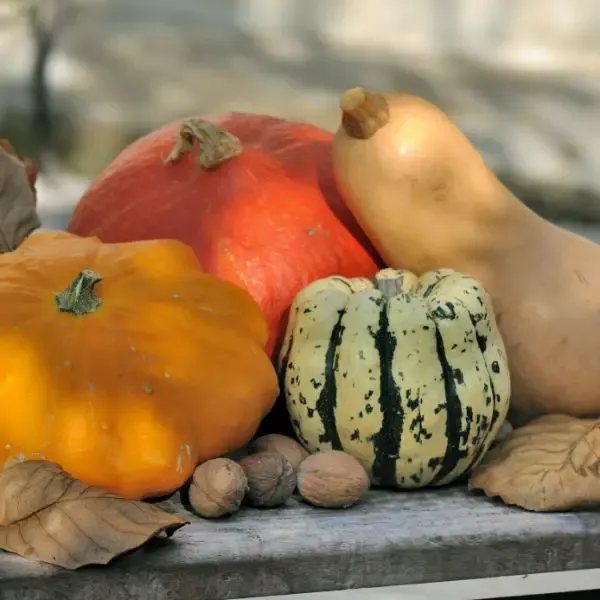
Cucurbit vegetables, such as cucumber and squash, are simply not a good match for your carrots. That’s because cucurbits are pretty aggressive about getting their nutrients and sunlight, so your carrots will have a really hard time getting what they need to grow up healthy and strong.
Both plants will be much better off with separate spots in the garden, although the carrots will benefit the most – they simply can’t compete with the more aggressive cucurbits!
FAQs
We’re just about to wrap things up here, but before we do, we’ve got a few frequently asked questions for you so that you can take a little extra knowledge with you before we bid a proper goodbye. Let’s take a look at what people are asking the most about the best and worst companion plants for carrots!
What kind of plants make the best companions for carrots?

Ideally, you want a companion that won’t fight over resources with your carrots and you should look for options that improve the soil or which are fragrant, so as to attract useful insects and to hopefully repel some of the pests that might otherwise infest your carrots.
There are even a few that are said to improve flavor, but we generally recommend going the ‘nutrition’ or ‘defense’ route when choosing your companions. You’ll get better yields for it and if you’re taking good care of your crops, they’ll be plenty delicious on their own!
What are the top 3 plants to avoid growing with my carrots?

If we had to pick a ‘top 3’, we would probably pick parsnips, fennel, and dill. With parsnips, the biggest problem is that they grow underground, just like your carrots do, and they share too many of the same pests for this to be a good pairing. Putting them together is just a recipe for trouble, as you’re basically preparing an underground feast for those pests.
With fennel, as we mentioned earlier in the article it’s a similar problem, as it will attract pests that may dine on both plants, but it also produces a chemical that can stunt your carrot’s growth if you are unlucky. Finally, with the aforementioned dill, cross pollination can net you some bad-tasting carrots!
These 3 definitely need to be placed somewhere else in the garden where they can’t bother or otherwise affect your carrots.
What are the top 3 companion plants for my carrots that carrot flies hate the most?
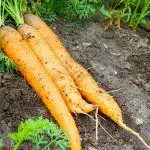
That would be leeks, chives, and onions. Each of these alliums brings a powerful, smelly mojo to the garden plot where you put them and this can repel carrot flies or simply hide the scent of your carrots so that these pests will never find them. It’s a pretty sweet setup, so be sure to give one of these 3 a try so you can see it for yourself. Any one of these 3 alliums can really make a difference!
Some closing words
In today’s article we have explored the best (and worst) companion plants for carrots and we hope that you’ve seen a few that have piqued your interest. Companion planting really takes your gardening to a new level, as you learn Nature’s little ‘hacks’ and use them to your advantage.
Just remember that as a root vegetable, your best bet is to go with companion plants that can soup-up the soil or which will provide an additional layer of defense from the pests that might otherwise dine on your carefully-cultivated carrots.
Once you’ve experimented a bit and get the hang of it, you’ll be amazed at the kind of defenses and nutritional boosts that you implement by the simple addition or one or more clever companions. Thanks so much for visiting us today and we wish you the very best in your companion planting experiments at home – it’s a lot of fun and you’re going to love the results!
More companion plants
